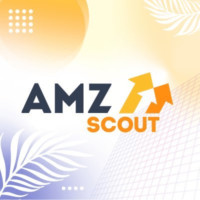Selling on Amazon has tremendous profit potential, which is why single entrepreneurs and large corporations have jumped on the platform to make the most of its vast audience.
In the last few years, Amazon has become an e-commerce mammoth, generating over $469.8 billion in revenue in 2022. Any business owner who wishes to flourish, therefore, must focus on creating and running an Amazon storefront.
However, some traditional businesses are still hesitant to make the leap. One reason they cite is the high costs associated with selling on Amazon.
Once you consider the overheads involved in running any business, you’ll find that Amazon’s costs aren’t unreasonable.
Everything you need to know about how much it costs to sell on Amazon is covered in this nifty guide. So you can crunch the numbers and start your Amazon seller journey sooner rather than later!
Main Costs Incurred by Amazon Sellers
There are all kinds of costs that sellers incur when running a business. However, setting up an Amazon storefront involves specific costs beyond the usual inventory and stock investments.
Here are some of the main costs associated with selling on Amazon:
Account Fees
When you first sign up as an Amazon seller, you will be asked to choose between two types of accounts. They each involve different fees:
- Individual Account – pay-as-you-go system
- Professional account – monthly subscription system
Each account has features designed to fulfill the specific needs of different types of sellers: those with low-volume small or medium businesses or high-volume professional enterprises.
Individual accounts are ideal for businesses that sell less than 40 items per month and do not sell products in categories such as jewelry, footwear, art, food, luggage, handbags, etc. Under this account, sellers must pay a flat selling fee of $0.99 for each item sold.
Professional accounts are for businesses that generate high volumes of orders. The monthly subscription costs $39.99, with some perks that set it apart from Individual accounts:
- No per-item fee for product sales
- Customizable shipping rates for books, music, videos, and DVD categories
- Calculate US sales, and add taxes to orders
- Bulk product uploads
- Free gift wrap option on certain items
Fulfilled By Amazon (FBA) Fees
Individual and Professional account sellers can use Fulfilled By Amazon (FBA) services to stock, pack, and ship their products. For these, Amazon charges FBA fees.
Many sellers find this worthwhile for certain items because it reduces their packaging and shipping responsibilities. It also makes items eligible for Prime sales.
FBA fees are not consistent and vary depending on certain factors:
FBA Service Fees
The picking, packing, and shipping costs for FBA are streamlined and compiled in one charge, while the cost of inventory storage is separate. FBA fees cover boxes and packaging, as well as handling returns from unsatisfied buyers.
- Picking, packing, and handling fees include the fees for preparing and delivering an order to a customer, including the cost of shipping.
- Monthly inventory storage fees include the cost of storing products at the Amazon warehouse.
The cost for storing standard-sized products from January to September is 5 cents per cubic foot, while oversized products cost 48 cents per cubic foot.
A holiday season surcharge is applied from October to December, raising inventory storage costs. Standard-sized products cost $2.40 per cubic foot, while oversized products cost $1.20 per cubic foot.
Product Size FBA Fees
FBA fees also vary depending on the size of the product being stored and shipped through Amazon, including the packaging.
This is divided into two categories:
- Standard-sized packages – weigh less than 20 pounds and measure less than 18″x14″x8″ when packaged
- Oversized packages – weigh over 20 pounds and exceed 18″x14″x8″ when packaged
Note: To understand all the fees for a specific product, you can use the Profit Calculator built into the AMZScout PRO Extension. Just open the Amazon page, click on AMZScout, and use the Profit Calculator to view the relevant figures.

Amazon Sale-Related Fees
Amazon charges three types of seller fees on products that are sold on its platform:
- Referral fees – calculated as a percentage of the selling price of the product, can range from 6% to 45% depending on the product category.
- Minimum referral fees – some products have minimum referral fees that sellers must pay
- Closing fees – a flat $1.80 charge added to referral fees of products in the media category, including books, videos/DVDs, video games and software, music, and consoles.
The specific amounts vary depending on the item’s category and selling price.
Selling Services Fees
Amazon provides sellers with a platform for attracting new leads and generating a new customer base. With the Selling Services program, entrepreneurs can find and get new customers at no upfront cost.
Service sellers only pay revenue share once the job is complete, which depends on the type of service provided, and the price of the final service.
There are two types of fees associated with Selling Services on Amazon:
- Prepackaged – services with a clearly defined scope and an estimated rate
- Recurring – services that are purchased as part of a subscription plan with recurring appointments
For prepackaged services, such as product assembly, Amazon charges 20% up to $1000. For costs over $1000, Amazon takes a 15% cut.
Amazon takes a flat 15% of the service fee for recurring services.
Rental Book Service Fee
If a business model involves offering rental books, for example, college textbooks, Amazon charges $5.00 for each.
Shipping Credits and Costs
Amazon gives shipping credits to sellers who ship orders themselves. However, the credits are typically lower than the general shipping rates.
High-Volume Listing Fees
Amazon charges a high-volume listing fee per ASIN each month. This costs $0.005 and is charged if certain requirements are met:
- The ASIN was created at least 12 months ago
- The ASIN has not sold in the last 12 months
- The ASIN had an active offer during the previous 12 months
- The ASIN is in a non-media category, like DVDs, music, consoles, video games, and books
Amazon sometimes waives these fees for the first 100,000 ASINs, and only the qualifying ASINs after that will be charged.
Fulfilled By Merchant (FBM) Fees
Fulfilled By Merchant is when the seller is responsible for packing and shipping their own products. The costs are lower than FBA, but Amazon doesn’t waive fees entirely.
FBM sellers with Individual accounts must use predetermined shipping rates defined by Amazon. Often, the shipping credit Amazon provides only covers some of the shipping cost.
In contrast, FBM sellers with Professional accounts can enjoy flexible shipping rates.
Only sellers in BMVD (books, music, video, DVD) get shipping credit from Amazon that matches their shipping rate and can vary depending on the shipping method. For example, domestic standard, the domestic expedited, international standard, international expedited, and domestic two-day shipping incur different fees.

Costs of Selling Models
Different selling models on Amazon incur different rates depending on the inventory investment and other factors.
The most popular selling models and costs are as follows:
- Dropshipping – This involves fulfilling orders by outsourcing procurement, storage, and shipping to a third party. If you can find the best products to dropship on Amazon, this selling model doesn’t require much of an investment to begin.
- Online/retail arbitrage – With this model, sellers source cheap products from other retailers and sell them on Amazon at a markup. A $100 investment can be enough to get started.
- Private label – Products are sourced from a third-party manufacturer and sold under the seller’s brand or label. This requires an approximate initial investment of $1,000.
- Wholesale – This entails selling large quantities of products on Amazon and requires around $3,000 to get started.
Conclusion
Whether you’re just starting your e-commerce journey or already have a store and wish to expand selling on Amazon, you should know exactly what you’re getting into.
Now that you’re aware of all the costs associated with being an Amazon seller, you can open your storefront with the correct pricing and business model to ensure long-term profits and success!
Check out the EcomBalance Blog and gain more tips and tricks for growing your ecommerce business.









